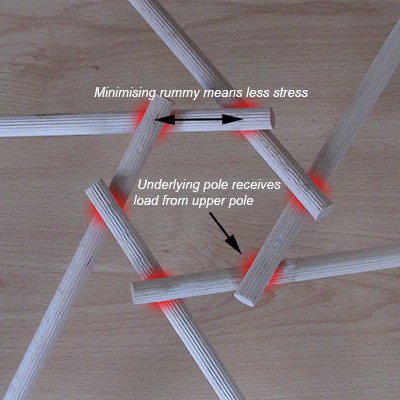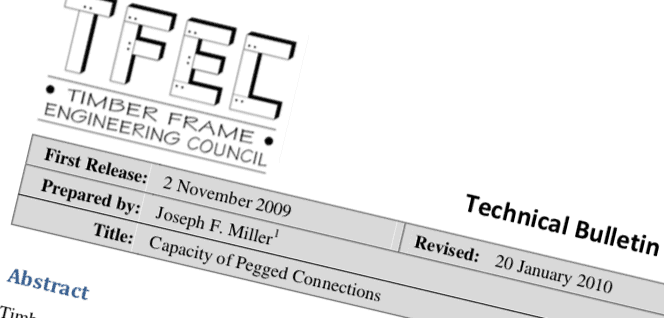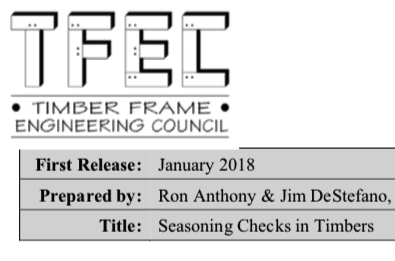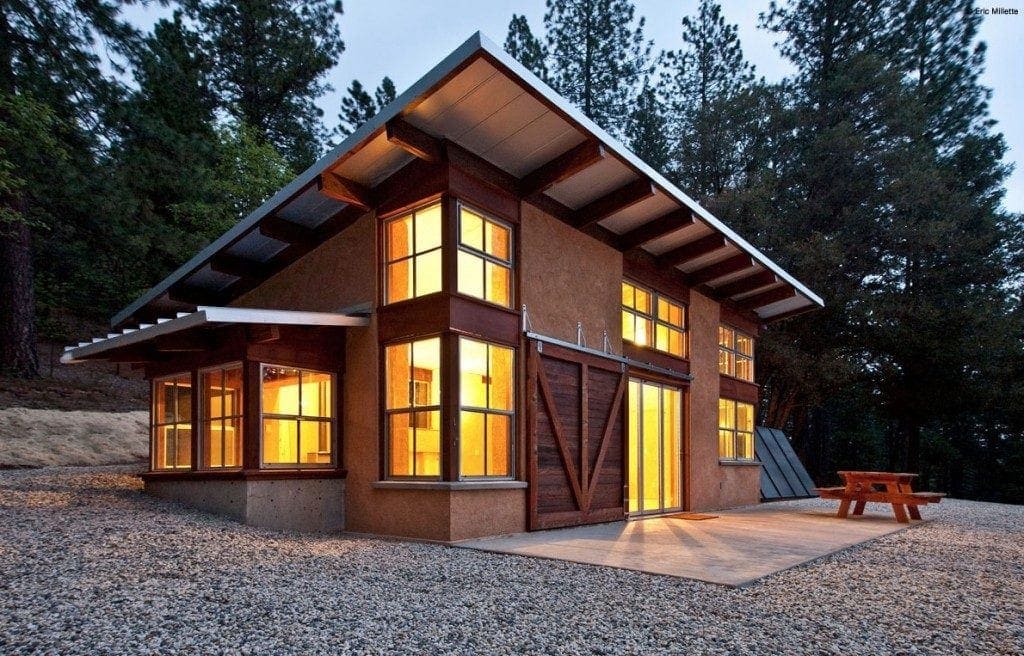
The elegance of a reciprocal roof, where each rafter is supported by the previous, creating a beautiful, self-supporting structure, is undeniable. The challenge is in calculating the angle of the roof, and author Daniel Siepman addresses in clear and simple terms in his post, “Simple calculations on a reciprocal roof.”
For the DIYer in particular, it is helpful to know that there are only two factors influencing the angle of the roof: thickness of the timber and the “rummy.” Mr. Siepman writes, “The rummy is the distance between two consecutive places where two poles meet each other, measured horizontally. The smaller the rummy, the larger the roof’s inclination. By selecting enough length of the rummy, you will be ensured of a limited roof angle.”
The circumference of the central roof opening is dependent on both size of the rummy and the number of poles used. The diameter of the central opening is more or less the circumference divided by π (3.1415) and will have the same number of corners as there are poles. You can experiment with this yourself (I used small dowels). For example, if you use three poles to create a reciprocal frame, you will have a triangular shaped opening – three corners. As the number of poles increases, the central opening approaches a circle more and more. However, you can run into problems with too many poles because the central opening will get too large!
Decreasing the rummy will create a very steep roof, however, so Mr. Siepman recommends making a notch at each meeting point of two poles.
Grab your own calculator and plan your own reciprocal roof today using Mr. Siepman’s article as your guide!





